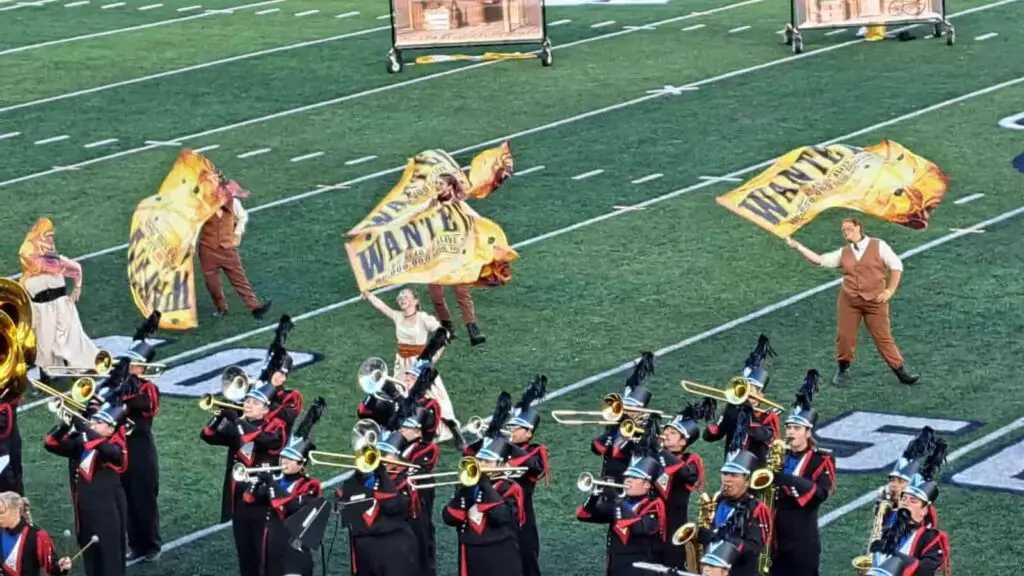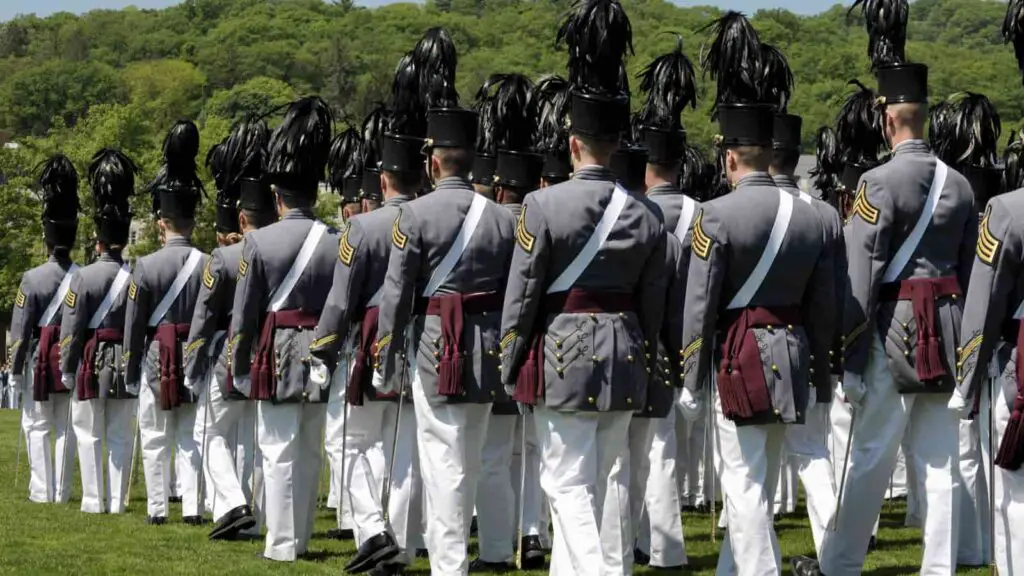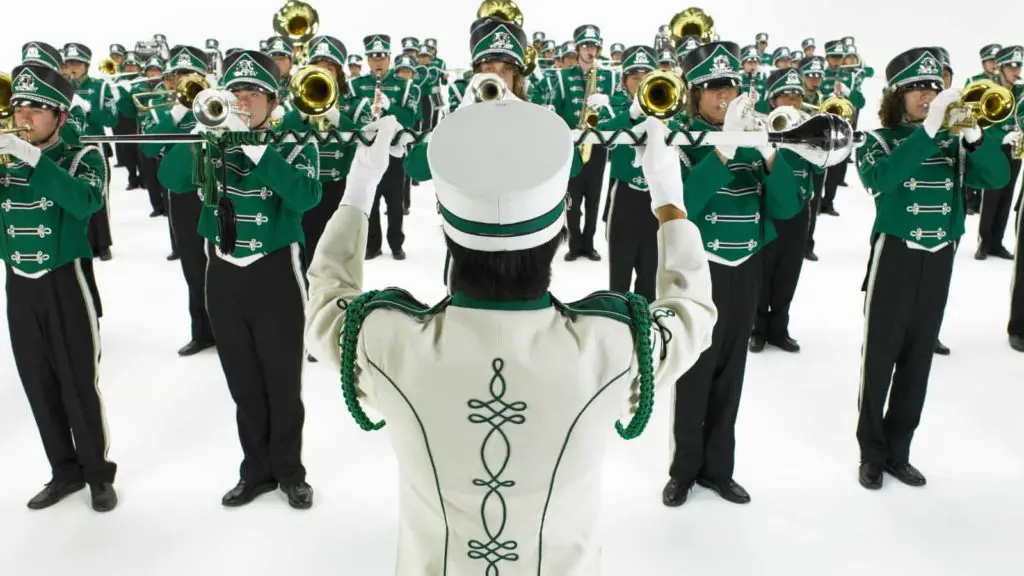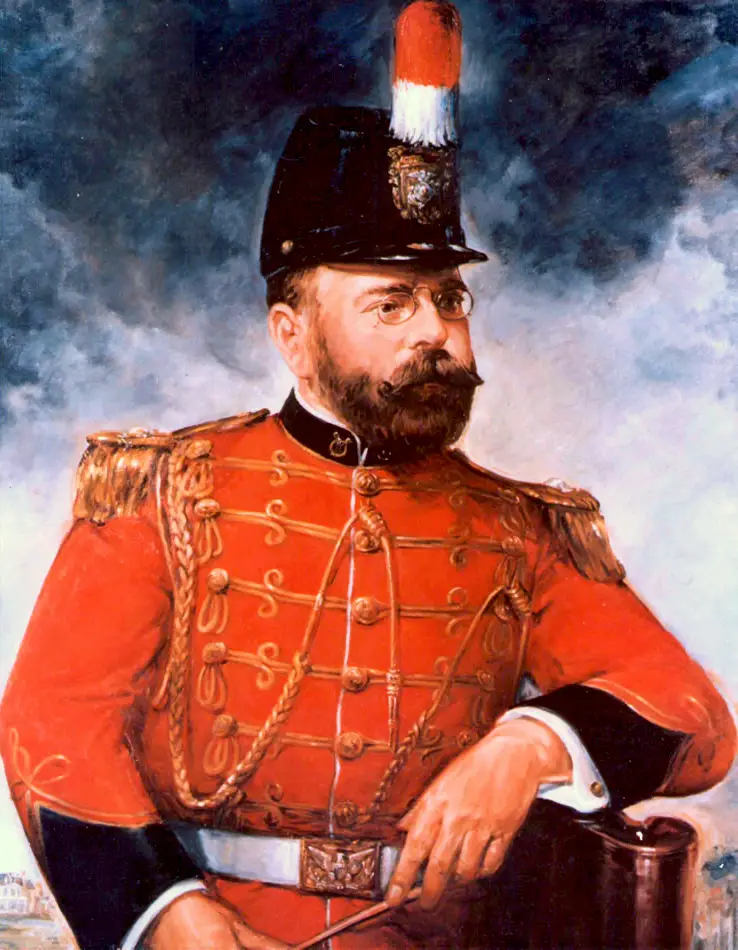Marching bands have been a beloved part of American culture for centuries. These large ensembles of musicians and performers march and play music at various events, including football games, parades, and competitions.
As a member or fan of marching bands, it is important to understand the fascinating history of marching bands, from their early military roots to their current role in education and entertainment.

Military Bands
Military bands have a long and rich history dating back centuries, and they have played a significant role in the evolution of marching bands. These bands have provided entertainment and motivation for soldiers, served as a means of communication on the battlefield, and played a central role in ceremonial events.
One of the earliest known examples of military bands is the Roman military band, which consisted of musicians who played various instruments, including the tuba, cornu, and buccina.
Note: As time passed, military bands continued to evolve and take on more diverse roles. In the 19th and early 20th centuries, military bands began to become their own entities no longer associated with only war and battle.
With this new role, military bands began to play a significant part in ceremonial events, such as parades and state occasions. In many cases, military bands served as ambassadors for their countries, representing the military and performing at events worldwide.
This change in form and function created a way for new types of marching bands to form.

Military bands are made up of highly trained and skilled musicians who are often required to play a variety of instruments. These bands often include brass, woodwind, and percussion instruments and marching percussion, such as snare drums and bass drums.
Military bands also often include a color guard, which consists of flag bearers and rifle spinners who perform intricate routines with flags and rifles.
Note: Military marching bands are typically organized and structured differently from civilian marching bands.
Military marching bands often have a hierarchical structure, with a commanding officer or director at the top and various ranks of musicians below. The size and structure of a military marching band can vary depending on the specific unit or organization it is affiliated with.
In many cases, military marching bands are a part of the military’s music program, which is responsible for training and educating military musicians. Military marching bands may also be affiliated with specific military units, such as a particular branch of the military or a specific base.
Military marching bands often have a strong sense of tradition and pride, and they have long histories dating back centuries. These bands are an important part of military culture and are often a source of pride for military personnel and their families.
Drum and Bugle Corps
Drum and bugle corps are an offshoot of historically military bands. They are musical ensembles that primarily perform music with brass and percussion instruments.
These groups have a long history dating back to the late 19th century, when military bands and brass ensembles were a common feature of parades and other public events.
Note: Brass and percussion instruments are often the loudest and most recognizable instruments in Marching bands making a powerful display. This is part of the reason why Drum and Bugle Corps are so popular today. Press play below to hear what a powerful bugle can sound like.
One of the first known drum and bugle corps was the Old Bedford Corps, which was founded in 1881 in Massachusetts. This group was made up of members of the Bedford Corps of Cadets, a local militia unit. The Old Bedford Corps was known for its highly skilled musicians and precise marching, and it became a popular attraction at parades and other events.
Over the years, drum and bugle corps have evolved and have become an important part of the cultural landscape in many countries around the world.

Today, drum and bugle corps can be found in a variety of settings, including parades, competitions, and other public events. Many drum and bugle corps are also associated with schools, community organizations, and military units, and they are known for their high level of musicianship and discipline.
College Marching Bands
As time passed, marching bands began to evolve and take on more diverse roles. In the 19th and early 20th centuries, college marching bands became popular and were often associated with football games.
These bands would march onto the field and perform halftime shows, showcasing their musical skills and creativity.
Over time, college marching bands have continued to evolve and grow in popularity. Today, college marching bands can be found at universities across the country and are known for their colorful uniforms, intricate marching patterns, and elaborate halftime shows. Many college marching bands have a strong sense of pride and tradition, with alumni often returning to support their former bands.
Note: Click Here to Discover the Top College Marching Bands in the Country: Find Out Who Made the Cut!
In addition to performing at football games and other events, college marching bands may also participate in competitions, where they compete against other marching bands and are judged on factors such as musical ability, marching precision, and overall performance.

Overall, college marching bands are an important part of college life, fostering a sense of community and providing opportunities for students to develop their musical skills and leadership abilities. These bands are a beloved part of American culture and have a rich and varied history dating back centuries.
High School Marching Bands
In the early 20th century, high school marching bands also began to emerge. These bands were often smaller in size and focused on performing at football games and other school events.
Over time, high school marching bands have continued to evolve and grow in popularity. Many high schools today take great pride in their school’s marching band.
High school marching bands provided students with the opportunity to develop their musical skills and be a part of a team. Being part of the marching band in high school means devoting countless hours practicing, and dedicating many weekends to performing or traveling with the band.
Some of the most iconic parts of high school marching band is the infamous band camp! This is a week or two in the summer that students spend often 8 or more hours a day working on learning drill and the fundamentals of how to march and play their instruments at the same time.
In addition to performing at football games and other school events, high school marching bands generally also participate in competitions against other bands. Some of these competitions include Bands of America, the Mid States Band Association, and more.
Note: Learn how high school marching bands are sized and classified with this easy chart!
The most prestigious of marching bands will have the honor of being invited to march in nationally known parades such as the Thanksgiving Day Parade, or the Rose Bowl Parade.
In addition to their role in entertainment and school spirit, high school marching bands also play an important role in the development of young musicians. Many students who participate in high school marching bands go on to pursue careers in music or other related fields, and the skills and experiences they gain through their participation in these bands can be invaluable.
Modern Marching Bands
Over the past 150 years, marching bands have grown in popularity and become an iconic staple in America’s culture and history.
Note: One notable figure in the history of marching bands is John Philip Sousa, the leader of the U.S. Marine Band. Sousa is often considered the “father” of the modern marching band.
Sousa was born in Washington, D.C. in 1854 and began his musical career as a member of the U.S. Marine Band. He later served as the leader of the band, and during his tenure, he composed many of his most famous works, including “The Stars and Stripes Forever,” “Semper Fidelis,” and “The Washington Post March.”
Sousa was known for his energetic and innovative approach to conducting, and he is credited with helping to popularize the modern marching band. He took the U.S. Marine Band on tour throughout the United States and Europe, and his concerts were known for their high level of musicianship and entertainment value.
Sousa’s music became a staple at patriotic events and military ceremonies, and he is often referred to as “The March King” for his contributions to the genre. Sousa died in 1932, but his music continues to be popular and widely performed to this day.

With no 2 marching bands a like, each marching band has its unique style and flavor. From the southern HBCU (Historically Black Colleges and Universities) to the small-town Idaho band each marching band provides its members to be part of a community (most would venture to say family) of like-minded musicians with a goal to perfect the art of marching, playing great music and entertaining the crowd!
In conclusion, the history of marching bands is rich and varied, with roots dating back centuries.
Today, marching bands can be found at all levels of education and play a vital role in school spirit and community pride. Marching bands require a high level of teamwork and discipline, as members must learn to march and play their instruments in unison. These bands also foster a sense of community and provide opportunities for students to develop leadership skills and self-confidence.
We hope this article has been helpful and informative for you in your musical journey. Please let us know if there is anything that we could add or change to make this article a better resource for our readers.
Please e-mail us at: [email protected] to let us know how we are doing!
Disclaimer: This post may contain affiliate links. We only recommend high-quality products that are used and recommended by real musicians. If you use these links to buy something we earn a small commission.
